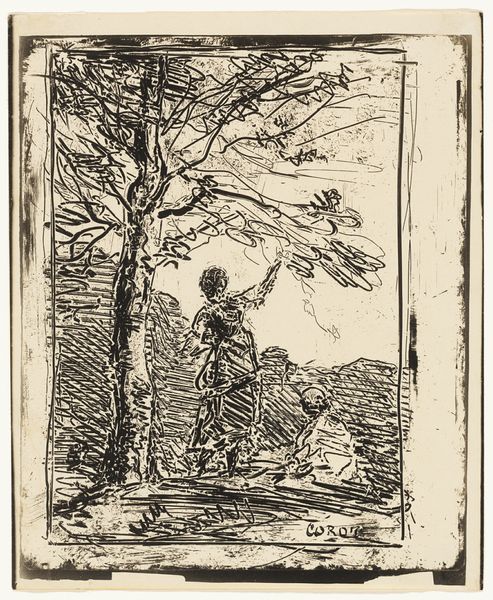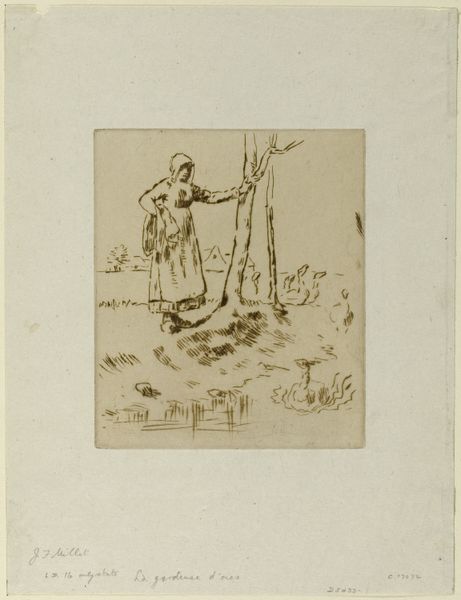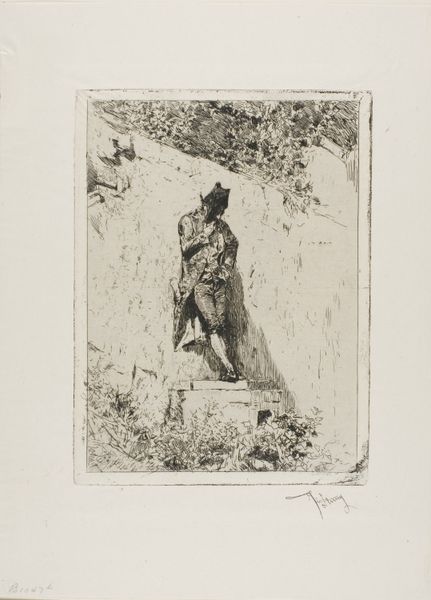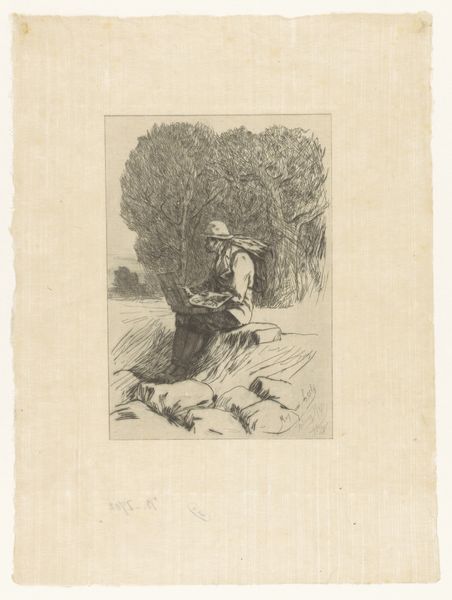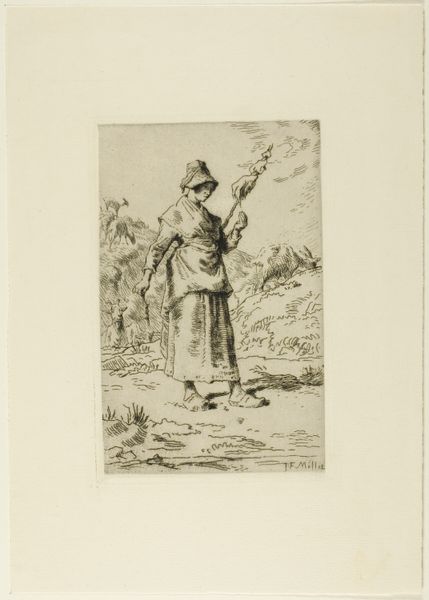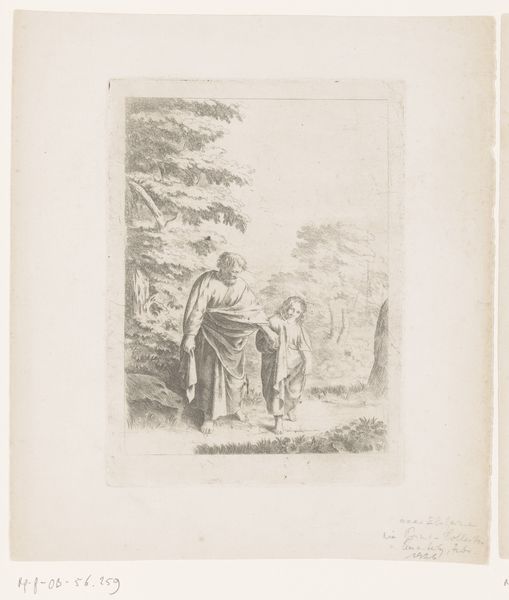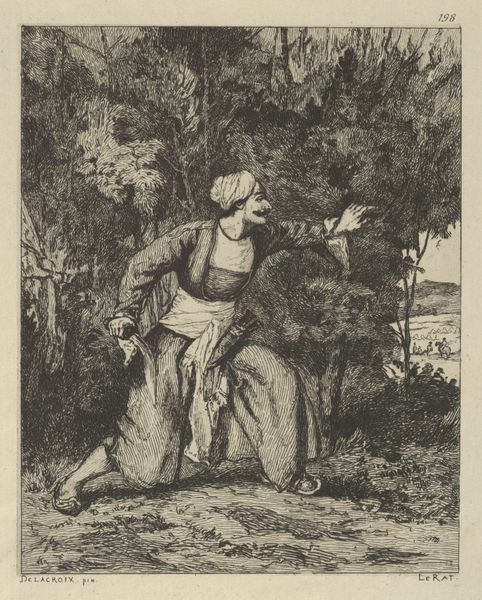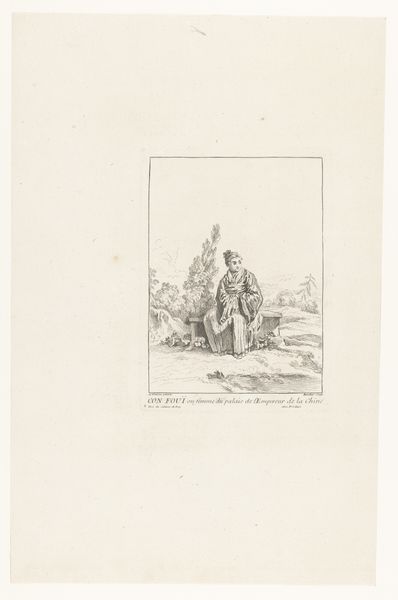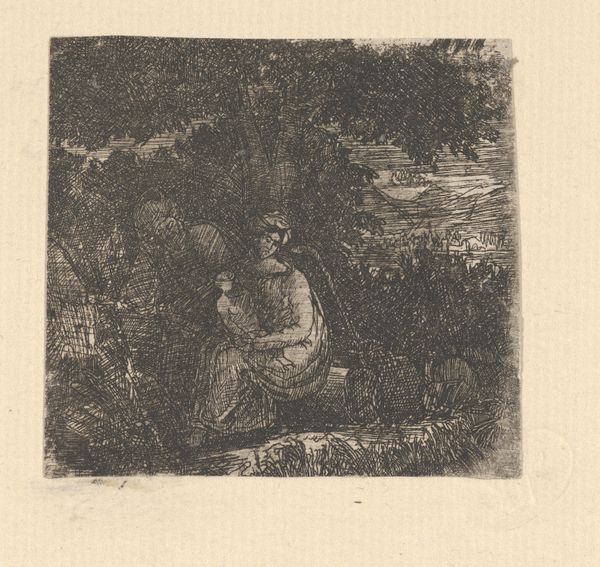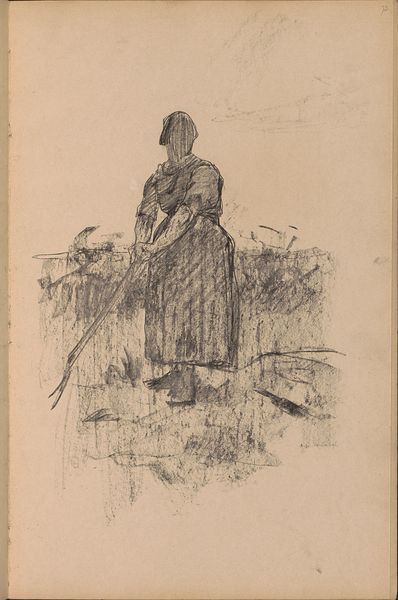
drawing, etching, ink
#
portrait
#
drawing
#
light pencil work
#
pen sketch
#
etching
#
old engraving style
#
landscape
#
personal sketchbook
#
ink
#
ink drawing experimentation
#
pen-ink sketch
#
ink colored
#
pen work
#
sketchbook drawing
#
genre-painting
#
sketchbook art
#
realism
Dimensions: height 94 mm, width 74 mm
Copyright: Rijks Museum: Open Domain
Editor: This is “Zittende herderin,” or “Seated Shepherdess,” made sometime between 1888 and 1916 by Laurent van der Windt, rendered with etching and ink. There’s a stillness and solitude to the figure that draws me in. How do you interpret this work, particularly considering its historical context? Curator: It's tempting to see this as a romantic portrayal of rural life, echoing the late 19th-century artistic fascination with peasant subjects, almost as though idealized. Yet, considering its period and the artist's background, I'm drawn to examine this portrayal beyond romanticism. What statements might Van der Windt be making, subtly, about the public perception and the value assigned to this specific type of labor, shepherding? Editor: So, you’re suggesting we consider what the image *does* rather than simply what it *shows*? That’s a powerful distinction. Could the artist have intended to subtly challenge societal views on labor, or to elevate this working-class subject matter? Curator: Exactly. The seemingly simple act of depicting a shepherdess gains complexity when viewed through socio-political lenses. Remember, artistic choices reflect and influence public consciousness. Was Van der Windt participating in the idealization of peasant life that served certain social ideologies, or was he subtly critiquing those very ideals by revealing the realities of rural work? Editor: That reframes the way I see it. Instead of passively accepting a picturesque image, we should consider its potential impact on viewers. It makes you wonder who the intended audience was, and what messages they received. Curator: Precisely. And what this particular kind of imagery does over time to how we imagine rural populations even now. Seeing is never neutral, particularly when public perception is involved. Editor: I now recognize how much social commentary can be embedded within seemingly simple genre paintings. Thanks! Curator: And I find myself pondering about the enduring power of images to shape how we understand the world and to subtly shift cultural assumptions. A rewarding reflection for me as well!
Comments
No comments
Be the first to comment and join the conversation on the ultimate creative platform.
